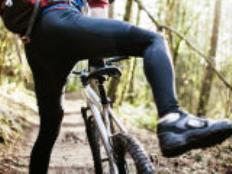
If all runners would spend just 10 minutes with a foam roller or lacrosse ball performing self-myofascial release a few times a week, they would restore the structural integrity necessary for optimal performance. Massaging overactive soft tissue will reduce any inflammation in your muscles and fascial system, or the sheath that surrounds your muscles.
More: Prevent Running Overuse Injuries in 6 Steps
Why Runners Need Myofascial Release
There are many causes that lead to dysfunction in the body's kinetic chain, such as work, stress, gravity and pattern overload, or repeating the same motion consistently. The more you run, the more you'll experience pattern overload. It can place a lot of stress on the body's systems.The body is made up of the nervous, skeletal and muscular systems; together they create the kinetic chain. These systems work together to produce movement. If one system is not working properly, there will be dysfunction in your biomechanics.
Altered biomechanics can cause modified length-tension relationships and force-couple relationships. Length-tension is the length that a muscle can stretch to produce the greatest force. Overactive muscles are in a shortened state, and this reduces force output.
Force-couple relationships are muscle groups moving together to produce movement in a joint. When the soft tissue is in an altered state, it will compromise these relationships and the integrity of the movement. Any dysfunctions in movement will ultimately lead to tissue trauma, loss of range of motion and, eventually, injury.
More: How to Run Injury-Free
Prevent Injury with Myofascial Release
Body awareness, consistency, and being proactive are the three main keys that keep you moving efficiently. Body awareness is the ability to read what your body is telling you. Our bodies are always giving us feedback, and by listening to that feedback, you can start treating its needs. If you ignore signs of pain and fatigue and continue to push through pain, your body will break down.If you consistently make self-myofascial release a priority during your daily training and rest days, your body will recover faster and chance of injury will decrease.
If you have battled injuries in the past, you know that being proactive can save you from injuries, frustration and seeing an orthopedist. Knowing your body and continuing to work on its weaknesses, even when there is not a problem, is a trait that every successful athlete should embrace.
Running is a movement created by the body through the nervous, muscular and skeletal systems. With every stride, a small deviation in the foot, legs or hips can have a global effect on the entire body. Efficient movement is lost, more energy is needed to produce the same movement, and risk of injury now increases. Maintaining structural integrity through self-myofascial release will allow the body to be more flexible, mobile and efficient. Movement is part of our daily life, but it's not created equally. Those who spend the time on self-myofascial release are a few steps ahead.
READ THIS NEXT: 10 Self-Myofascial Release Exercises for Runners
About the Author









Discuss This Article